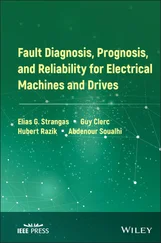The systems science approaches emerging in social epidemiology and public health research today are hardly new. Their historical use dates back to several decades within other disciplines, including physics, economics, engineering, and systems biology (Mabry et al. 2010). For example, systems science approaches such as ABM and MSM have been previously used to address wide‐ranging topics such as overfishing, the decline of ancient civilizations, climate change, and terrorism networks (Mabry et al. 2010). Their recent adoption into the public health arena can be attributed to a growing recognition of their utility for addressing intractable public health problems such as the spreading obesity epidemic (Hammond 2009) and the complexity of tobacco control policies (Tengs et al. 2001; Levy et al. 2002). Other recent applications of ABM to population health include analyzing the spread of infectious disease epidemics such as pandemic flu (Longini et al. 2005); modeling the social determinants of behaviors such as alcohol and drug use (Hoffer et al. 2009); and simulating dynamics of chronic diseases such as diabetes at a population level (Jones et al. 2006).
As should become evident throughout the remainder of this book, the possible applications of ABM and MSM to the social and economic determinants of population health are vast. These potential applications range from studying the spread of infectious diseases (e.g. COVID‐19) or spread of intractable problems such as the obesity epidemic, to modeling the social determinants of behaviors such as alcohol or drug use, to simulating the public health impacts of enacting new tax policies. These techniques have been largely developed and applied in other fields including computer science, political science, economics, and social policy. Diffusion and adoption of these approaches into the fields of social epidemiology and public health are more recent, and there remains a tremendous potential for transforming the landscape of these fields by integrating these novel applications.
2.5 Structure of this Book
In this introductory section ( Part I), Chapter 1defines the social determinants of health, discusses conventional approaches for studying them, and indicates the methodological limitations in identifying their impacts and comments on the public health significance of addressing the social determinants of health. In Chapter 2, we have provided a rationale and overview of current concepts and methods for applying two major sets of analytical tools, ABM and MSM, considered within a larger toolkit of modeling and simulation approaches, to study these social determinants.
In the next section, Part II( Chapters 3– 6), we focus on conceptual and empirical applications of ABM to help “unpack” our understanding of the social determinants of health. It consists of four chapters providing an overview of current concepts and methods used for ABM and provides a state‐of‐the‐art, critical synthesis of the ABM evidence base both in the social sciences and in social epidemiology on the social determinants of health to inform future public health research and practice.
Chapter 3reviews the key terms for agent‐based models in practitioner language, highlights ABM methods to assess the social determinants of health at a population level, discusses applications for studying the social determinants of health and novel extensions of this methodology, and provides an illustrative example. Chapter 4gives detailed examples of empirically powerful applications of ABM in the social sciences, including a foundation to inform the more recent ABM evidence on the social determinants of health that are reviewed in the subsequent chapter. This body of evidence is explored and grouped into three key areas: neighborhood research (e.g. residential preferences), research on scaling laws in social systems, and anthropological models. Chapter 5reviews the current evidence on the applications of ABM in social epidemiology and public health to better understand the impacts of the social determinants of health. This evidence is explored and grouped into three key areas: health disparities, obesity, and tobacco control. Several examples of public health applications of ABM including for modeling obesity and tobacco use are introduced. These include models that explore the effects of social influence on obesity dynamics (Hammond and Ornstein 2014), models of residential segregation and obesity disparities (Auchincloss et al. 2011), and a model examining retail point‐of‐sale interventions for tobacco control (Luke et al. 2017).
Chapter 6summarizes the evidence highlighted in Chapters 4and 5and past public policy translation of this evidence and discusses the apparent evidence gaps that, if addressed, would advance the ABM field of inquiry for modeling and “unpacking” the social determinants of health.
Part III( Chapters 7– 10) analogously focuses on conceptual and empirical applications of MSM to simulate and thus enhance our understanding of the impacts of the social determinants of health. It provides an overview of the current concepts and methods used for MSM and gives a rich synthesis of the MSM evidence base both in the social sciences and in the field of public health on the social determinants of health.
Chapter 7reviews the key terms using MSM in practitioner language, highlights microsimulation modeling methods to assess the social determinants of health at a population level, discusses applications for studying the social determinants of health and novel extensions of this methodology, and provides an illustrative example. Chapter 8reviews the current evidence on the applications of MSM in the social sciences and gives a foundation to inform the more recent MSM evidence on the social determinants of health reviewed in the subsequent chapter. Chapter 9systematically reviews the current evidence on the applications of MSM to better understand the impacts of the social determinants of health. For example, the chapter describes published examples of applications of MSM including projections of the economic cost savings and population health benefits that would occur if the WHO's recommendations on the social determinants of health were to be adopted in Australia and the impacts on mortality burden of modifying US federal income tax policies based on recent proposals. This chapter also highlights some MSM applications to the study of health care policies, disease microsimulation, and health behavior‐related policies.
Chapter 10summarizes the evidence presented in Chapters 8and 9, comments on public policy translation of some of this evidence, and discusses current evidence gaps that, if filled, could move the MSM field toward a richer understanding of the social determinants of health.
We conclude the book with Part IV, Chapter 11, by discussing the future directions for research using ABM and microsimulation modeling and simulation, including the convergence of aspects of both ABM and MSM into the same analyses. It also comments on facilitators and constraints for the continued emergence of these forms of modeling and simulation and casts light on the potential policy implications of findings from these more complex and integrative models.
1 Auchincloss, A.H., Riolo, R.L., Brown, D.G. et al. (2011). An agent‐based model of income inequalities in diet in the context of residential segregation. American Journal of Preventive Medicine 40 (3): 303–311.
2 Bambra, C., Gibson, M., Amanda, S. et al. (2010). Tackling the wider social determinants of health and health inequalities: evidence from systematic reviews. Journal of Epidemiology and Community Health 64: 284–291.
3 Bourguignon, F. and Spadaro, A. (2006). Microsimulation as a tool for evaluating redistribution policies. The Journal of Economic Inequality 4 (1): 77–106.
Читать дальше












